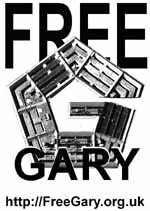We are the 99 per cent. That slogan has captured the imagination of hundreds of thousands of people as the Occupy Wall Street movement has spread worldwide.
As the instigators and beneficiaries of global financial crisis go about their business, protest camps are establishing themselves as testimony to a rising tide of calls for a different way of life, where people matter more than finance and equality more than individual wealth.
We have all seen striking pictures of ordinary people protesting, many of whom have never taken to the streets before. We have seen too that when push comes to shove (often literally) the forces of law and order are readier to protect the laws and orders of the Masters of the Universe than the people who have been most hurt by their actions.
Yet 99 per cent of people are clearly not demonstrating, protesting and occupying.It might be truer to observe that the 99 per cent are just trying to get by, going about their daily business in the hope that things will get better.
The power of the protest camps is not that 99 per cent of people are there, or even that 99 per cent of people support them (which is questionable). It is the power of witness: like the child who said the emperor had no clothes, they point out what most people are reluctant to say. There's a long history to draw on here, from the civil rights movements of the 1960s to the million-strong protest against the Iraq war.
While such occupations are a testament to the strength of feeling, they often do little more than express a desire for change - for a world in which people take more power over their own lives and have more say in the running of the world around them.
There's another kind of occupation that can help bring about this change. It involves taking over land and assets and re-using them for the benefit of local people.
In Coin Street on London's South Bank, local people who were at risk of being displaced to make way for commercial development created their own housing co-op and now manage much of the land in one of the capital's prime areas, with affordable homes and childcare for people who would otherwise have been forced out of the city centre.
In Liverpool, the Eldonian Village is another testimony to local people's refusal to accept that the authorities knew best. Here people whose neighbourhood would have been destroyed by a slum clearance scheme made it clear they wanted to stay put, and are now running their own homes and creating work for local people.
On the Isle of Gigha in the west of Scotland, a community that had been neglected for decades by their private landlord have bought the island for themselves, repaired their homes and are generating their own renewable energy.
In Hebden Bridge, Yorkshire, local people have taken over the former town hall, unwanted by the council but valued by local residents.They are creating much-needed community meeting spaces and room for start-up businesses.
There is a rapidly growing movement of community asset ownership, with local people taking over property and running it in their own interests. Their actions often start with immediate issues: the need to create a community garden, the disappearance of the last bank in the high street, the closure of the local library. Where the private market has ignored their needs and the state has failed to be an effective steward of local assets, people are starting to move in and take over.
It isn't easy, it takes time and energy and money, and there are many pitfalls along the way, as recent publications by the Joseph Rowntree Foundation have shown. But when it works, it shows how land and economic activity can be managed for the benefit of the 99 per cent, not just the wealthy and well-connected. It may not get the attention of a protest in Wall Street or outside St Paul's Cathedral, but this is a movement to watch.
Follow Julian Dobson on Twitter: www.twitter.com/juliandobson

















No comments:
Post a Comment